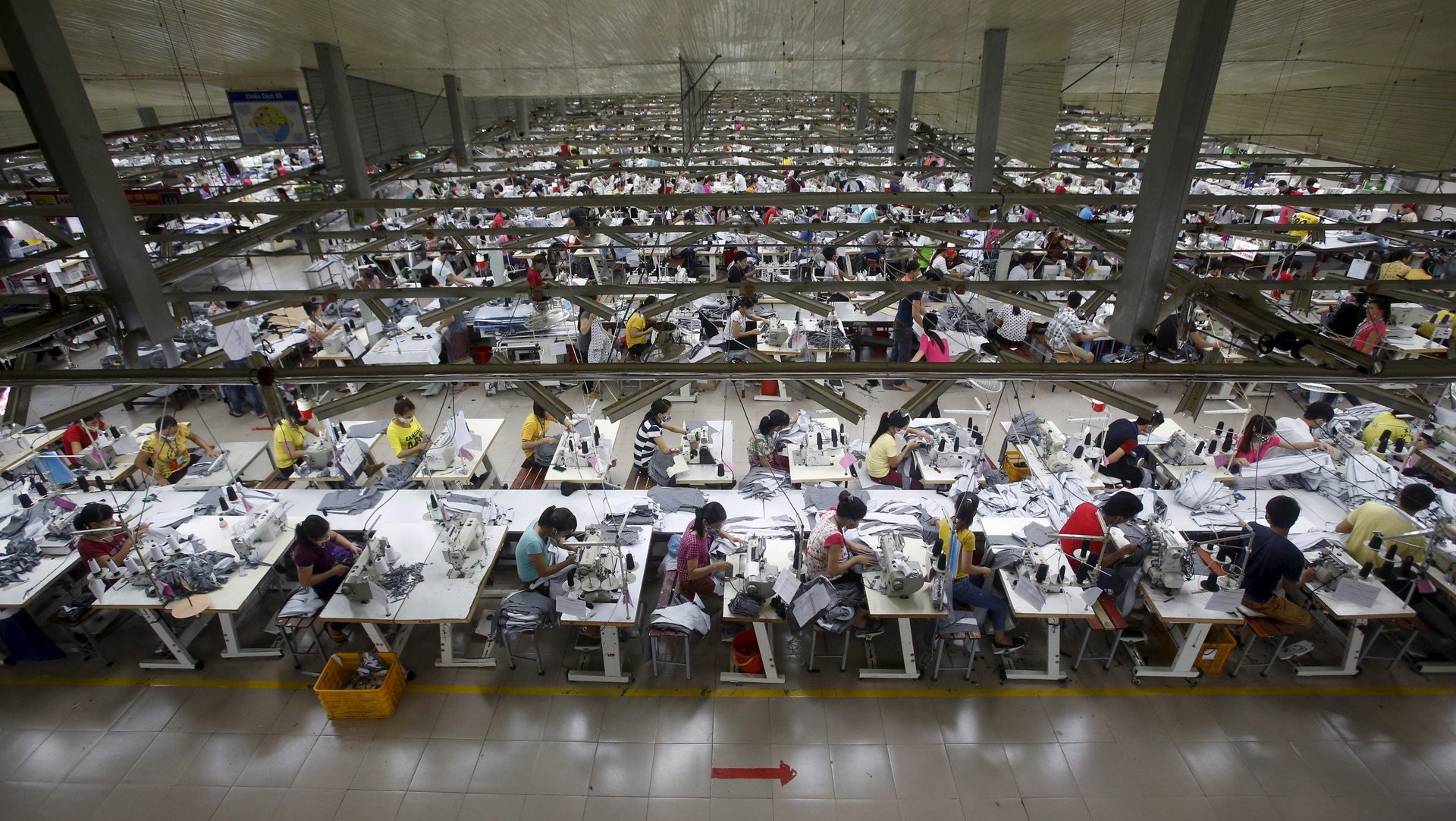Vietnam is globalization’s last big fan
It should come as no surprise that US president Barack Obama’s first visit to Vietnam was accompanied this week by a flurry of deal-making.


It should come as no surprise that US president Barack Obama’s first visit to Vietnam was accompanied this week by a flurry of deal-making.
Vietnamese airline VietJet ordered 100 planes from Boeing, a deal worth more than $11 billion. And Obama announced the US would rescind its 50-year arms embargo against Vietnam, which remains dominated by the Communist authoritarian regime that has controlled the country since the US military withdrew in 1975.
Vietnam exported roughly $30 billion of goods to the US in 2015, making the US its top export market. But the US is eager to show that the trading relationship works both ways, and that Vietnam can be a lucrative market for American goods, too.
There are few countries where, conceptually, trade remains as popular as it is in Vietnam. A 2014 survey by Pew Research noted that “the Vietnamese are the most enthusiastic backers of both trade and investment” among the nations included in the Trans Pacific Partnership, a trade deal that remains stalled in Congress during a contentious election year. Some 95% of Vietnamese respondents said that “trade is good,” with high percentages concurring that trade both creates jobs and raises wages.
Only a decade ago, such views were close to economic gospel among policy makers. But globalization—the blend of policies featuring the free flow of capital, goods and, to a far lesser extent, people, prescribed as a nearly foolproof recipe for economic growth in 1990s—is increasingly running into harsh resistance around the world.
In the European Union, the realities of the Paris and Brussels terrorist attacks are putting the economic bloc’s commitment to the free movement of people within the EU under stress. Britain’s Brexit vote in June risks marking a major turning point against the traditions of post-war European economic and political integration. In China, the country appears to be backsliding on its commitment to slowly open up itself to free flows of capital, as investors withdraw billions from the slowing giant. And in the US, firebrand populist Donald Trump has effectively won the Republican presidential nomination on the back of an unapologetic opposition to trade deals and immigration.
Of course, the situation in those countries are very different from Vietnam, which has a large, low-wage workforce well positioned to benefit mightily from globalization for the foreseeable future. Its cheap labor has been siphoning industrial jobs away from an increasingly expensive China in recent years. And an influx of foreign capital from more well-developed nations such as Japan has financed a flurry of industrial activity. The result has been surge in economic growth and a steep drop in poverty rates, which have fallen from 60% in 1993 to under 14% today, according to the IMF.
That doesn’t mean the Vietnamese will be content forever. For Vietnam to continue to deliver rising standards of living, it must find a way to steadily move out of lower-value manufactured goods and diversify into more sophisticated products such as cell phones and microchips, which have powered the next stage of development in other Asian countries.
More pressingly, like every other country, Vietnam must find a way to manage both the slowdown in China and growing anti-trade sentiment elsewhere.
After all, it doesn’t matter how popular trade is in Vietnam if the world’s largest economies continue to pull back.